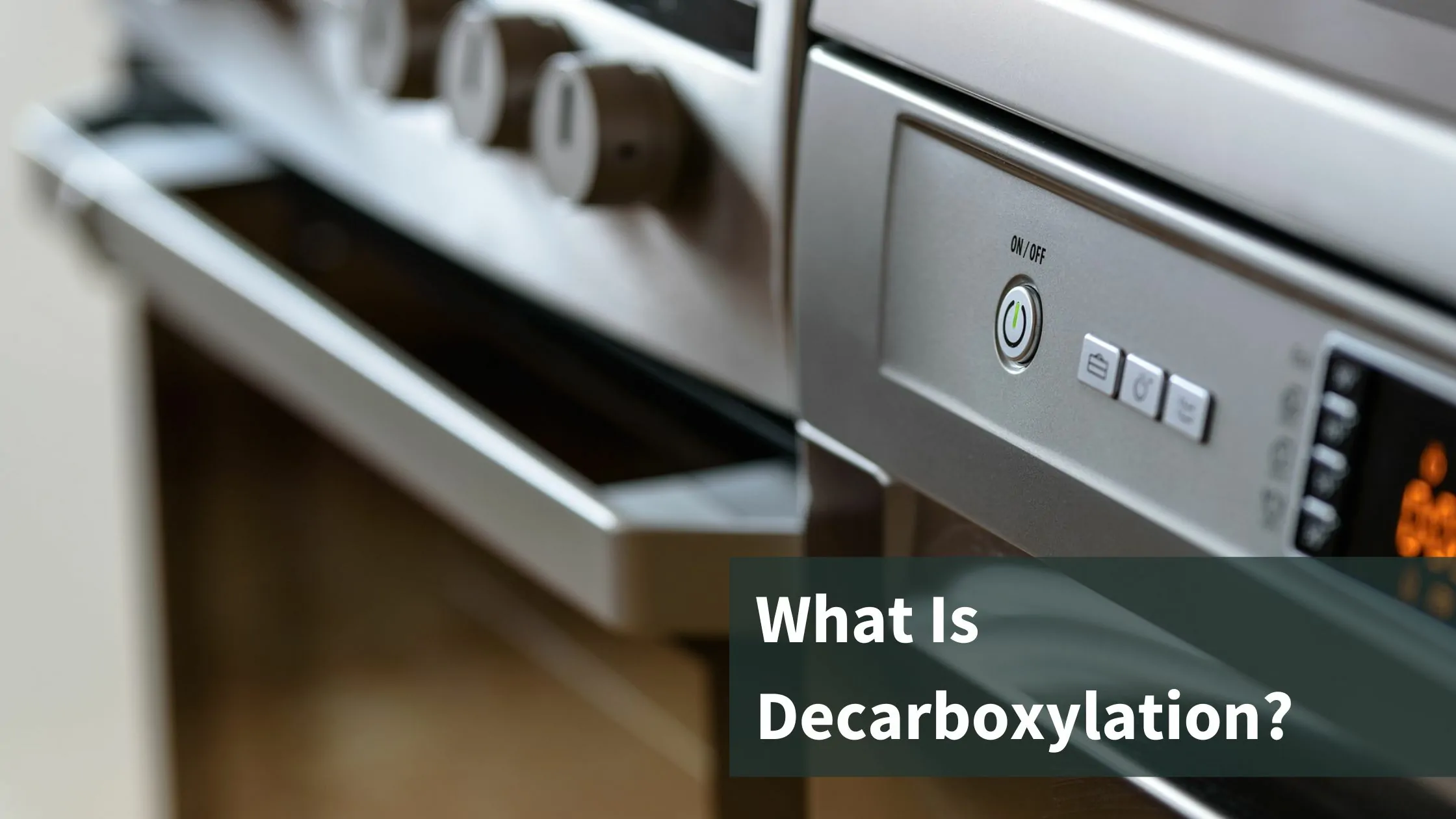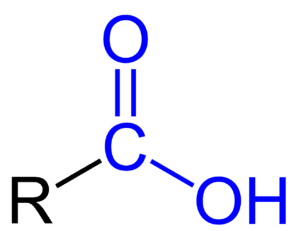No products in the cart.
What Is Decarboxylation & Why You Need To Start Doing It

If you’ve ever tried your hand at making cannabis-infused edibles, no doubt you’ve run into a few road bumps along the way. Decarboxylation is one of the biggest for aspiring CBD edible chefs. It can make or break your infused treats. Because it’s such an important process we’ll be covering it in detail in this post including,
- What decarboxylation is
- Why it’s necessary for cannabinoid infusions
- And, break it down step-by-step so you can elevate your edible-making game
What Is Decarboxylation?
Decarboxylation is a process in which we can use heat and time to turn inactive cannabinoids into active, ready-to-ingest cannabinoids.
Raw cannabis produces high concentrations of acidic cannabinoids like CBDa, THCa, and CBGa. Acidic cannabinoids carry an extra carboxyl (-COOH) ring group and don’t interact with your body in the same way that their “decarbed” forms do. In order to activate these cannabinoids, we have to strip their extra carboxyl ring.
When we say we’re decarboxylating cannabis, we literally mean the process (-ation) of removing (de-) carboxyl.
How Does Decarboxylation Work?
Decarboxylating is a function of time, heat, and sometimes oxygen. When you smoke or vape cannabis flower, you’re subjecting it to rapid decarboxylation and inhaling activated cannabinoids.
You can also slowly decarboxylate your flower with prolonged oxygen exposure. Oftentimes, smokers don’t prefer this method as it makes their flower stale.
What Happens When You Decarboxylate?
We know that decarboxylation is a function of heat and time and involves stripping acidic cannabinoids of their extra carboxyl group, but what happens to the cannabinoid during decarboxylation?
CBDa, for example, has 22 carbon atoms, 30 hydrogen atoms, and 4 oxygen atoms. When we decarboxylate this acidic cannabinoid, we remove one carbon atom and two oxygen atoms and decrease the molar mass of the cannabinoid by roughly 12.2%.
Note: This is also the reason you’ll see total CBD (or THC) on your certificate of analysis calculated as:
Total potential CBD in a product = [CBD present] + ([CBDa present] x 0.877)
The 0.877 in the above equation comes from the acidic cannabinoid’s remaining molar mass after decarboxylation.
Is Decarboxylation Necessary For Edibles?
Yes, in order to properly infuse active cannabinoids into a fat prior to making homemade edibles, you need to first decarboxylate your cannabis.
Without decarboxylating your CBD hemp flower, you’ll leave a ton of cannabinoids behind, and without cannabinoids you’re infusion won’t be worth the effort.
How To Decarboxylate: The Basics
The two things you’ll need to decarboxylate your flower are heat and time.
Assuming you have both, follow these four easy steps for a near-flawless decarboxylation. Be advised that this is a very aromatic process and will make your living space smell like cannabis.
- Preheat your oven (or toaster oven) to 250 degrees Fahrenheit. Turn your overhead hood fan on if you have one.
- Line a baking sheet or glass baking dish with parchment paper. Lay your cannabis flower out evenly on the parchment paper. If you have any larger buds, grind or rip them into small pieces before laying them out evenly on the parchment paper.
- Put your baking sheet or glass dish in the preheated oven for 40 minutes.
- After 40 minutes, pull your baking sheet from the oven and let your cannabis flower cool. It should be browned and brittle to the touch.
What’s the Best Decarboxylation Temperature?
While the above steps called for a temperature of 250F, the best decarboxylation temperature depends on the cannabinoid you’re trying to optimize. The optimal decarboxylation temperature is different for different cannabinoids.
CBD decarboxylates well between 240F and 250F. For other novel cannabinoids or THC, you’ll need to look up their respective optimal temperature and time.
Should You Grind Your Cannabis Before Decarboxylation?
Grinding your cannabis flower down before decarboxylation doesn’t matter much. Assuming you’re using a convection oven for decarboxylation, the difference is going to be marginal.
Grinding your cannabis does matter for infusion though. After you’re done with decarboxylation, you’ll want to grind your cannabis down to increase your flower’s surface area and optimize the infusion.
Yes, You Can Decarboxylate…
Fresh Trim
If you’ve just finished up a home grow and have fresh trim, why not turn it into edibles? You can decarboxylate fresh trim the same way you would decarboxylate hemp flower.
Fresh Buds
If you have fresh hemp buds that you don’t want to cure and smoke, go ahead and throw them in the oven and decarboxylate them. Small buds are great for infusions.
Kief
You can also decarboxylate kief. Decarbing kief is similar to decarbing cannabis flower, but your kief can become sticky and harder to work with.
Sunset Lake CBD carries an entire lineup of CBD kief that you can use to bake with. See them here.
In A Toaster Oven
If you don’t have a full-sized oven available to you, you can also decarboxylate your cannabis flower in a toaster oven. The process is the same, though you should be more mindful of space and odor.
NOT In A Microwave…
We do not recommend decarbing your cannabis in a microwave. Microwaves work by targeting water molecules inside your food— in this case, your cannabis flower— and shaking them violently to create heat. This can lead to uneven heating and unchecked temperature spikes which can destroy your precious cannabinoids. Take it from this author who, in a rush to make cookies, lit his cannabis on fire using the microwave. Decarboxylation is a low and slow process and must be respected.
How To Decarboxylate: Advanced Tips
How To Decarboxylate Your Flower With Less Smell
Oven decarboxylation will make your entire living space smell like a Phish show. If you want to decarboxylate your cannabis covertly, this is a great tip for you.
Refer to our step-by-step decarboxylation guide earlier in this post. In order to decarb your cannabis with less smell, you’ll need an oven (or toaster oven) preheated to 250F, but you must use a baking dish. You’ll also need heavy-duty tin foil.
Line the bottom of the baking dish with parchment paper. Lay out all of your small buds or trim in the dish, but before you pop that dish in the oven, cover it completely with tinfoil, preferably more than once.
Once your dish is covered completely twice over with tin foil, put it in your preheated oven for 40 minutes. After 40 minutes, turn off the oven and let the dish completely cool inside.
Note: This method is not smell-proof, but it will drastically curb the cannabis smell.
How To Decarboxylate Your Flower With No Smell
There is a more involved way to decarboxylate your cannabis flower with no smell if you’re willing to stick it out.
You’ll need:
- A stove
- A sous vide bag (a temperature-safe bag)
- A stock pot
- Fill your soup pot with water and bring it to a boil.
- Place your cannabis flower, trim, or kief into a heat-safe cooking bag and seal it. It’s important that this bag be able to withstand temperatures of up to 220F.
- Place the bag into the boiling water for 90 minutes. Make sure that your pot doesn’t boil dry.
- Remove your bag from the water and let it cool before you remove the flower from the bag.
This process takes longer than your traditional oven decarboxylation because boiling water maintains a temperature of 212F. Properly decarbing cannabis at lower temperatures takes more time.
How To Skip The Decarboxylation Process
Is there a way to completely skip the decarboxylation process?
Sort of. Out of all of the methods laid out in this post, this takes the most patience.
If you vaporize your hemp flower, you may notice that it will come out brown and smelling of stale popcorn— reminiscent of decarboxylated cannabis. That’s no coincidence. When you vape your hemp flower, you’re decarboxylating it. Save the flower that you vaporize. When you collect enough of this already-vaped bud (AVB,) you can infuse it into oil for edibles.
What’s The Best Decarboxylation Method?
There is no best decarboxylation method. There are only optimal decarboxylation temperatures and times. As long as you can adhere to them and have patience, you’ll be able to unlock the true potential of your hemp flower.



